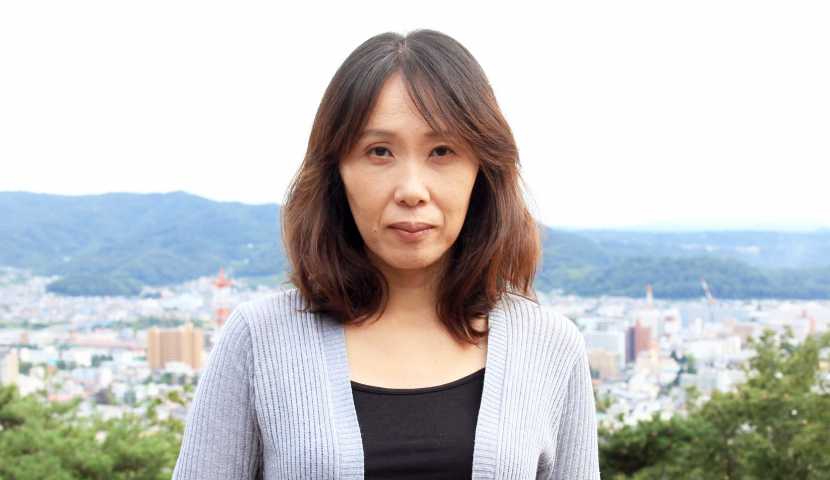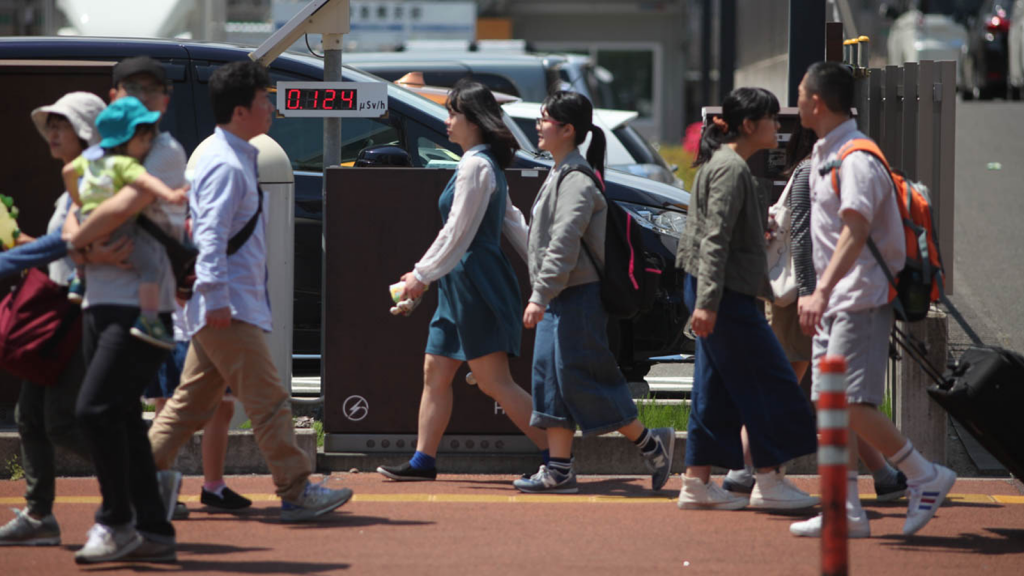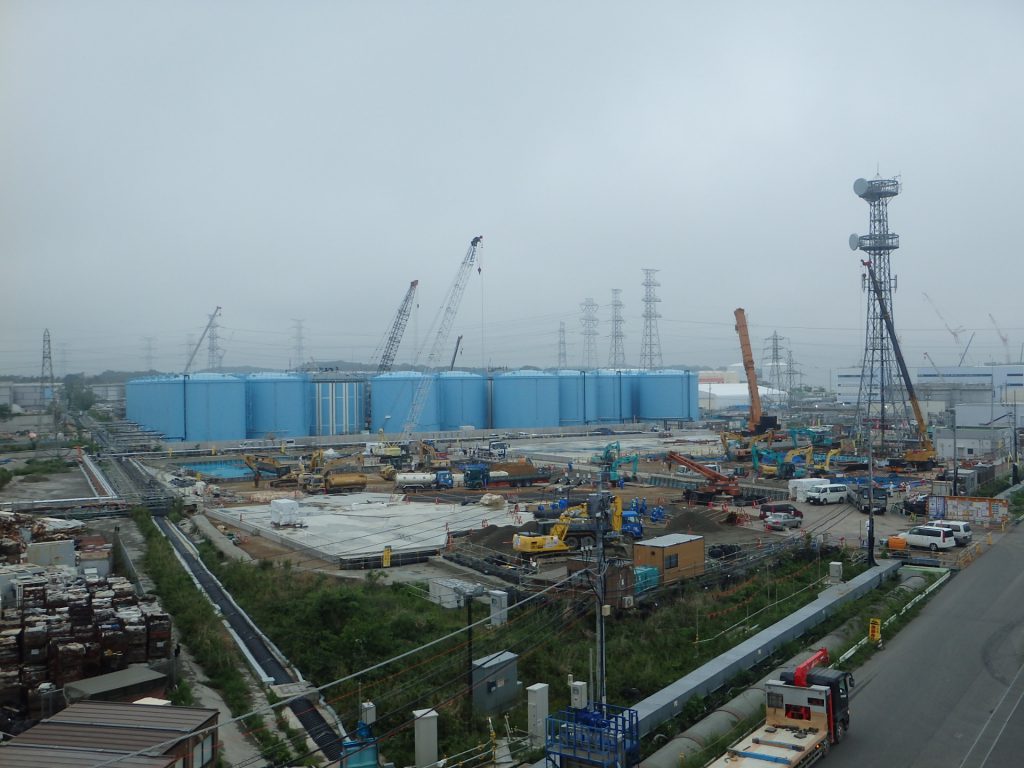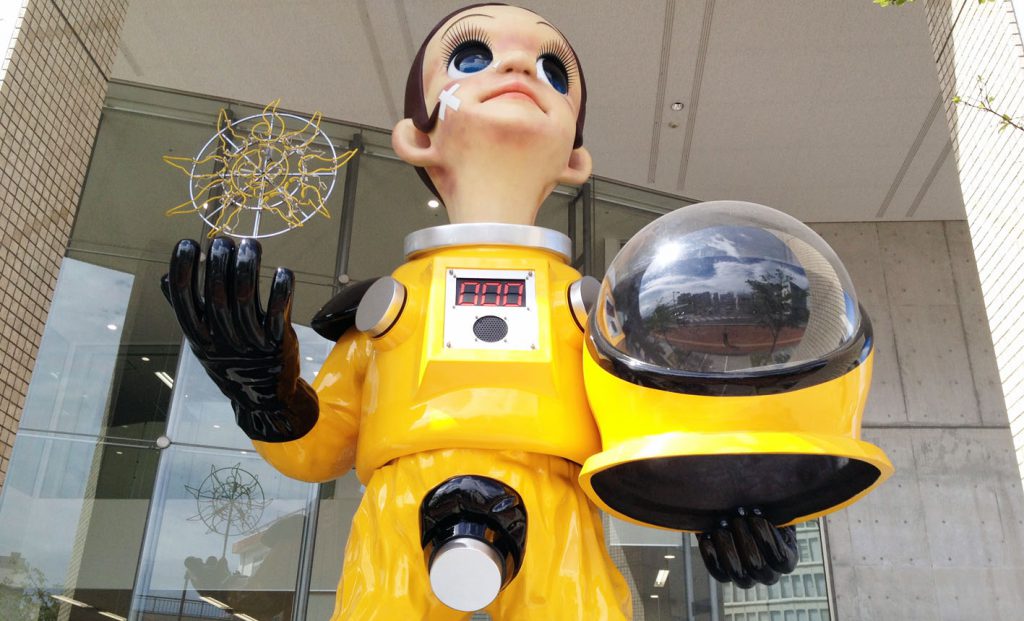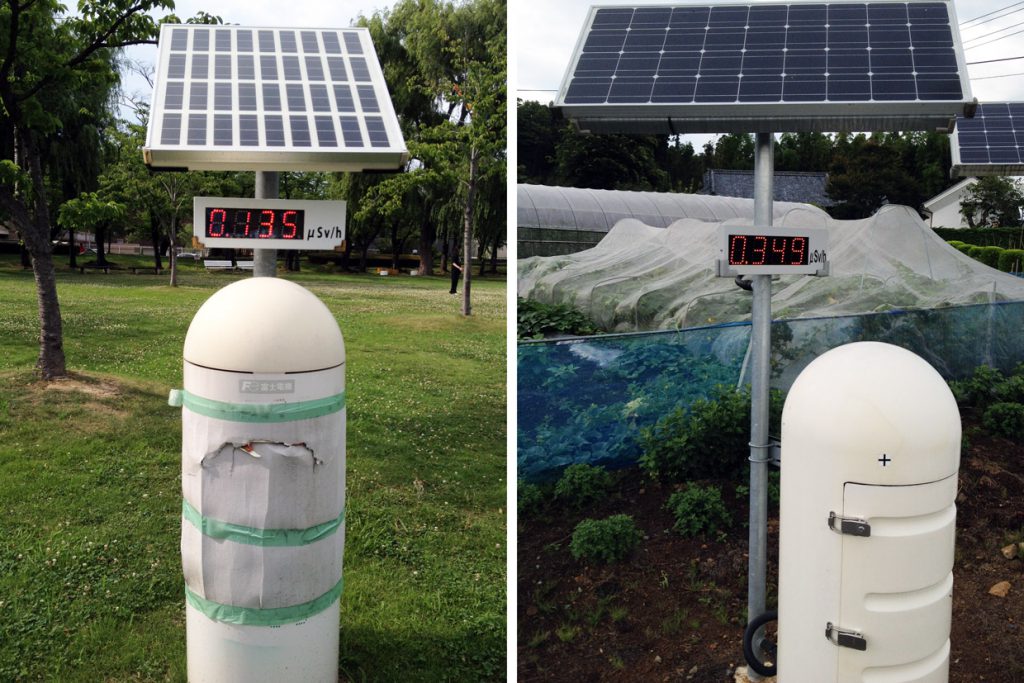Maki Sahara (Chairperson, NPO- Fukushima 30-Year Project)
A nurturing mother’s perspective
March 11, 2011- the Great East Japan Earthquake occurred – I was busy preparing for an event of my daugh-ter’s preschool while running my own business at home. During the power outage, I watched with disbelief the image of the tsunami on the small screen of my mobile phone. That image is still burned in my memory. From that point on, things changed to endless days of struggle. Our supply lines were severed; no water, no food. That’s when the accident occurred at the Fukushima Daiichi nuclear power plant controlled by Tokyo Electric Power Company (TEPCO).
Although it was announced repeatedly on television that “There is no immediate impact,” we all still feared harm from the invisible radioactivity. I told myself that there would be no use crying over what had happened and started searching for information about radiation on my own and exchanged information with my friends. Many people around us participated in various lecture meetings held at the time. I was relieved by the contents, and other times, I would hear information that would fuel my fear. There was constant uneasiness.
Expert scholars and researchers, as well as doctors gave dramatically opposing opinions on radiation. Ambiguous information and speculation was passed around among the citizens and confusion persisted without knowing the precise damage of the situation. Then, in the fall of the same year, I heard that some citizens would open a radioactivity measuring station. Initially, the group was made up of men of science who felt the necessity for keeping measurements, mostly supporters from distant locations such as Tokyo, but essentially it was the local mothers with children who urged the installation of a whole-body counter to check their kids’ health. The team asked me to join as I could sympathize with these mother’s anxieties and concerns. So I decided it was a good idea for me to become a member.
In the surrounding areas, it became more frequent for some families and mothers with children to evacuate voluntarily, but most families including mine, could not evacuate due to family circumstances.
I thought about what I could do while continuing to live in Fukushima. If I participate in activities here, I could get access to and share a variety of information. I decided to participate as a member of the staff of the Fukushima 30-Year Project, with the feeling that it could be the best way to help protect the children of Fukushima, including my daughter.
With increasing focus on reconstruction, many citizens feelings are disregarded- citizens deserve second opinions.
It’s been seven years since the nuclear accident in Fukushima and many people still feel anxiety from the repercussions from the accident. From my standpoint of raising my daughter in Fukushima and engaging regularly in taking radioactive measurements for a while now, I still have very little peace of mind.
What worries mothers the most is the lack of response and countermeasures regarding low dose radiation exposure to their children. There are various opinions on this difficult topic and even experts and academics have contrasting viewpoints. Despite the heated debate over the subject, there are few classes offered for us to learn about radiation damage to children, and that’s frustrating. I know it’s not that simple to reassure us just by offering some data or numbers. As time passes, Fukushima is almost returning to normal, accompanied by a decrease in the awareness of citizens, and a spreading of apathy. I’m having a hard time continuing in this atmosphere where it has become difficult to discuss radiation.
It feels strange that I continue to be concerned about radioactivity, even though everyone around me is only concentrating on reconstruction.
Many people might think that I am odd for continuing to still worry about radiation.
Maybe I should believe the government when they assure us that there is no present danger.
It is understandable to gradually become accustomed to the current conditions of life and there are many people who feel this way. Our intention here is neither to flame social anxieties nor to propagate that eve-rything is safe. I believe our role is to find out the facts and report them to the public to help each citizen judge what’s safe and what’s not.
At the moment, even the world’s experts cannot grasp exactly the long-term impact of low-dose radiation exposure. Without measurement data, it will be impossible to know the extent of the damage when some kind of affect on the body has surfaced. Those injured will have sacrificed in vain. I do not want anyone in the world to experience this type of situation again.
It felt as if there had been no nuclear accident and that Fukushima would be forgotten when those unfor-gettable words that everything is “under control” were stated by the prime minister when accepting the Tokyo Olympic invitation. However, then I thought that it would become difficult for the government and TEPCO to deal carelessly with the Fukushima situation, being monitored closely by the entire world. I am sincerely hopeful that the problems in Fukushima will be the background of the Olympics.
At the same time, I would like to continue to convey the current situation to people outside the prefecture and overseas, including the emotions of Fukushima’s citizens and the complex environment.
I feel that there is a necessity to keep detailed environmental measurements to allow citizens to live more at ease knowing what areas are safe and what areas are dangerous. In regards to the radiation problem, I think there should be second opinions provided with supporting evidence, especially considering the fact that the administration has not provided much information and the emotional toll that has taken on the citizens.
In order to have an environment where citizens can live without division, it is important for everyone to have discussions and be heard, even the small voices. I hope to work together and communicate with peo-ple who have varying concerns and listen to their perspectives. Furthermore, as I tell my experience to younger generations I hope it can help them think about what is really important.
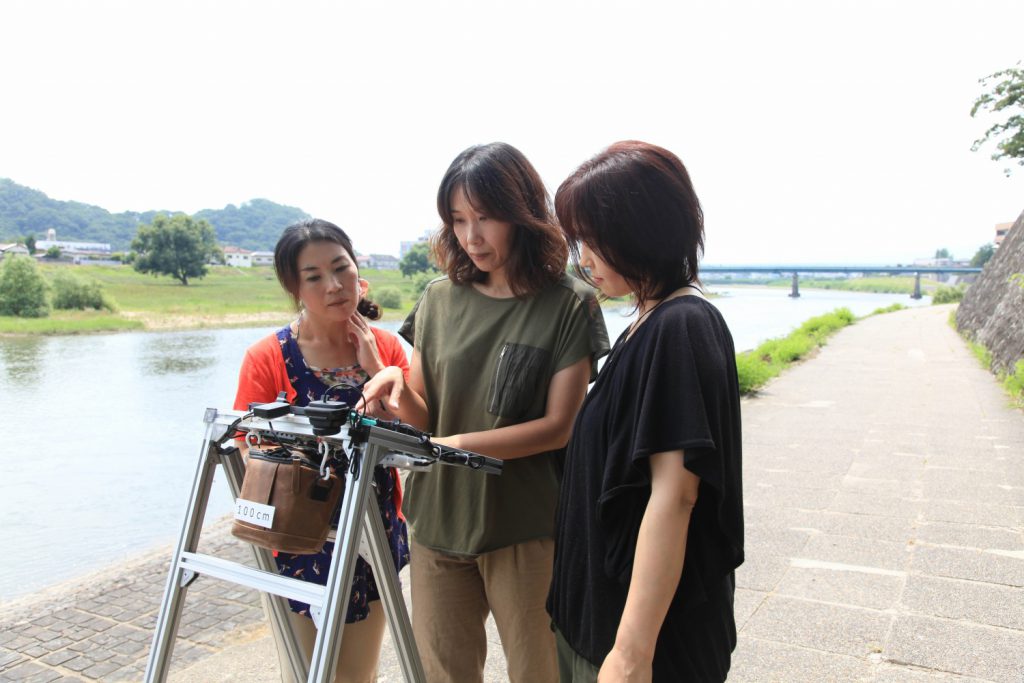
Monitoring post · Tritium water · Sunchild art exhibition & an Unstable Fukushima
Recently in Fukushima, discussions have fluctuated around three topics.
First, the problem of removing the monitoring posts (real time dosimetry system) (*01) . After the nuclear accident, approximately 3000 units were installed in Fukushima Prefecture, centering around kindergartens, schools, and parks. Recently, a policy was announced that the country will remove 2,400 units over the next three years. Residents have commented that it is important to be able to see and know the current dose and it has become one of the vital safety mechanisms for the citizens. Also, many believe that the monitoring posts should be left at least until the end of the decommissioning work. I submitted a request form to the mayor of Fukushima as a representative of a citizen’s association seeking the continuation of the monitoring posts. It was a pleasure to have a lot of mothers in the same position at the venue and to express our opinions comfortably.
For residents in the prefecture, I think that it is important to listen to opinions from outside the prefecture and to continue to keep track of measurements, whether it is food measurements or environmental meas-urements, and to display the numbers for the public to see. I will keep on watching the situation while con-tinuing to communicate my opinions.
Next is the tritium water release problem (*02). Diluting the tritium concentration and releasing into the ocean is the fastest and least costly method. No matter how much the emission concentration is moni-tored, there is no doubt that it will be a serious blow to the safety of the ocean around Fukushima. It is a really difficult challenge figuring out how we should deal with this problem, but we hope that the opinions of the residents will be respected rather than the use of the easiest and quickest solution.
Then among the mountains of problems, there is the issue of the “Sun Child” -a two story, statue-like piece of art resembling a child wearing protective clothing. This contemporary art by Kenji Yanobe was created with the wishes for Fukushima’s recovery in mind, imagining the hope for a future without nuclear disasters. However, since the unveiling ceremony in August, there have been many negative opinions and the city promptly removed it, as it was too difficult to continue to have such a controversial piece of work be the symbol of recovery. I think it is a shame that the city made such hasty decisions regarding both the set up and removal of the art work. It is a natural thing to express opinions of approval or disapproval re-garding these delicate problems. It was not just about weathering the nuclear damage, but we felt it was an important opportunity for citizens to talk about radiation again.
That’s the way it is now-difficult to talk about these issues in Fukushima. We must think about what is necessary to protect the children in the future. I hope to take advantage of my experiences and things that I’ve learned so far to make proper decisions on when and where to state my opinions, as well as create new learning opportunities for others regarding the future of Fukushima. I will continue to convey information to others, and will watch over Fukushima and this country until we recover a healthy lifestyle.
×Annotation *01 Removal of real-time dosimetry system
In late May 2011, after the TEPCO Fukushima Daiichi nuclear accident, the Ministry of Education, Culture, Sports, Science and Technology issued a policy to aim for 1 millisievert (mSv) per year for the radiation dose allowed around elementary and junior high schoolyards in Fukushima Prefecture. In October of the same year, in line with the policy and in order to thoroughly manage the health of the Fukushima citizens, radiation monitoring equipment was installed around schools and nursery facilities where children are ac-tive. On March 20, 2018, six and a half years later, at their regular meeting, the Nuclear Regulatory Com-mission decided to have 2,400 out of the 3,000 radiation monitoring units removed from the evacuation areas. The nuclear regulatory committee sited as the basis for removal that the radiation levels had de-creased on average over the past seven years and that the numbers had not fluctuated much during the past couple of years.×
×Annotation *02 Tritium problem in contaminated water
TEPCO operates a pollution control system (ALPS) to remove radioactive materials from the contaminated water used to cool the molten nuclear fuel. For ALPS, we cite the explanation about the polluted water purification system that was posted on the TEPCO website below. Although it is described as a trial op-eration as of June 2013 and a pilot operation as of December 2018, it has not yet reached full scale oper-ation.
“In the installed water treatment equipment, the radioactive substance cesium was mostly removed, but it was difficult to remove other substances besides cesium. In polynuclear removal equipment (ALPS), it is possible to remove 62 types of radioactive substances including cesium (excluding tritium). As of June 2013, we are conducting tests and aiming for full-scale operation. ”
As explained here, it is difficult to remove tritium radioactive material from contaminated water, which makes ocean discharge difficult and, therefore, the water must be kept in tanks. Currently, about 930,000 tons are stored in about 690 tanks, but since TEPCO’s tank limit is 1.37 million tons, the final disposal of contaminated water containing tritium will have to be considered soon. The jurisdictional Nuclear Regula-tory Commission insists that diluting the contaminated water and releasing it in the ocean is the only way to deal with this matter. This system however, is in conflict with local residents in Fukushima.
Also, in June 2018 it was discovered that TEPCO had not announced that radioactive material other than tritium had remained in the polluted water after ALPS purification. Among those radioactive substances are those that have a long half-lives and exceed the standards of release. Due to the discrepancy with TEPCO’s explanation so far, the relationship of trust with local residents has further collapsed. It seems that local residents will not agree with TEPCO’s explanation of oceanic release.×

